Log Splitter Maintenance: Complete Guide
- February 26, 2024
- 0 comment
Regular maintenance of your log splitter is essential for preserving its operational efficiency and prolonging its service life, particularly after periods of inactivity. This maintenance involves a series of critical steps: starting with a thorough inspection and cleaning to remove any debris or buildup, followed by checking and replacing the hydraulic fluid to ensure smooth operation of the splitting mechanism.
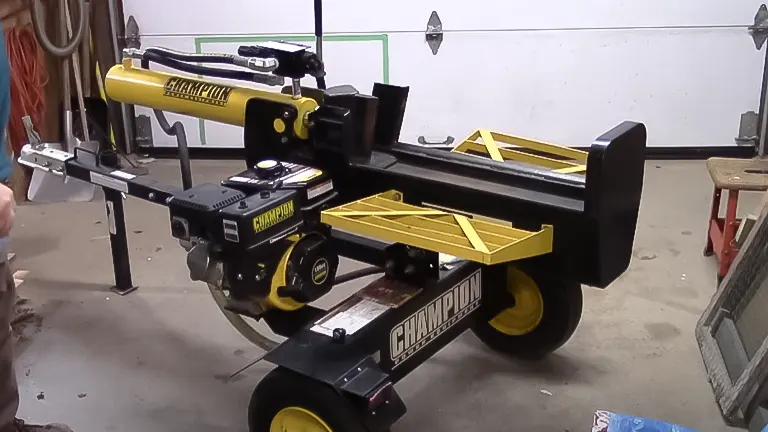
It’s also important to examine the engine’s oil level, air filter, and spark plug for signs of wear or contamination, replacing them as needed to prevent engine failure. Additionally, tightening loose bolts and fittings can prevent mechanical failure.
For those using gasoline models, checking the fuel system for old or contaminated fuel and using a stabilizer can prevent starting issues. This guide emphasizes the importance of these maintenance activities, based on practical experience with log splitters, to ensure reliable and efficient wood splitting performance.
List of Log Splitter Maintenance:
Starting Up After Idle Time
Starting up your log splitter after it has been idle for an extended period, such as over a year, is a critical first step before undertaking any maintenance tasks. This process involves turning on the machine and allowing it to run for a short period to warm up the engine.
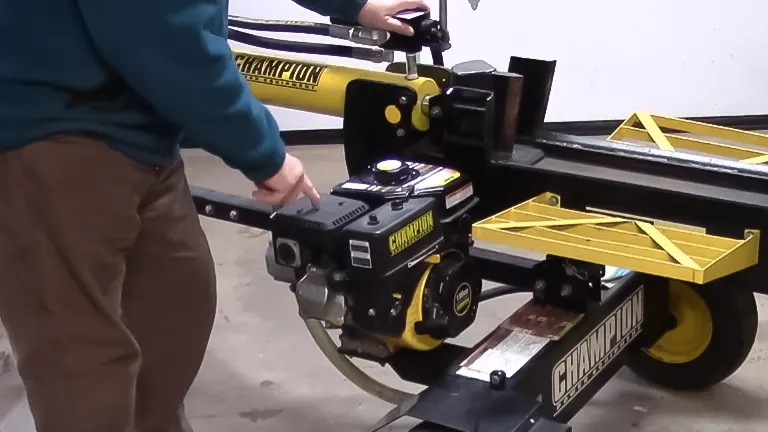
The aim is to circulate the oil, ensuring that all moving parts are lubricated and the engine’s internal components are operating smoothly. A warm engine will also provide a more accurate reading of oil levels and make the draining of old oil easier if a change is required.
This initial startup acts as a preliminary check that can help identify any immediate issues that might have developed during inactivity, such as starting difficulties or unusual noises, indicating the need for further inspection or maintenance. Ensuring a smooth start after downtime not only helps in assessing the condition of your log splitter but also prepares it for efficient performance in upcoming tasks.
3 Methods of Engine Maintenance
The engine is the heart of your log splitter, and taking care of it involves several key steps:
1. Oil Change
Changing the oil in your log splitter is a fundamental maintenance task that significantly impacts its performance and longevity. Starting with a warm engine facilitates the oil flow, making it easier to drain out old oil completely.
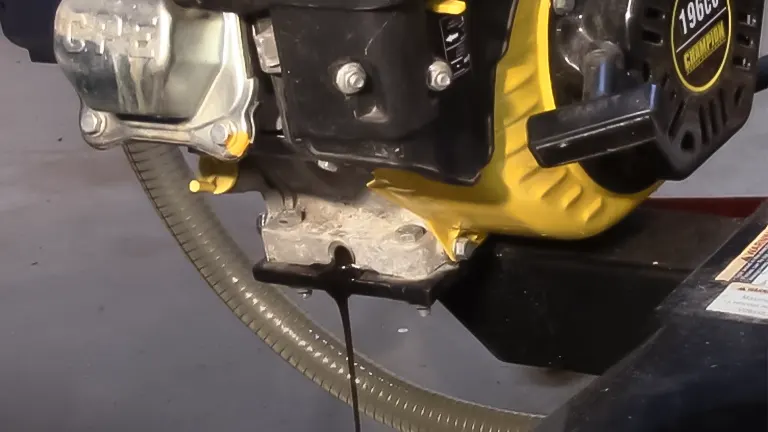
Before beginning, position your log splitter in a way that ensures the used oil will drain into a collection pan without spilling over the machine or the ground, which could create a messy and potentially hazardous situation.
In some cases, accessing the oil drain plug might be challenging due to the splitter’s design or positioning. Utilizing a hydraulic jack to slightly elevate or tilt the machine can provide better access to the drain plug, allowing for a cleaner and more efficient oil change process.
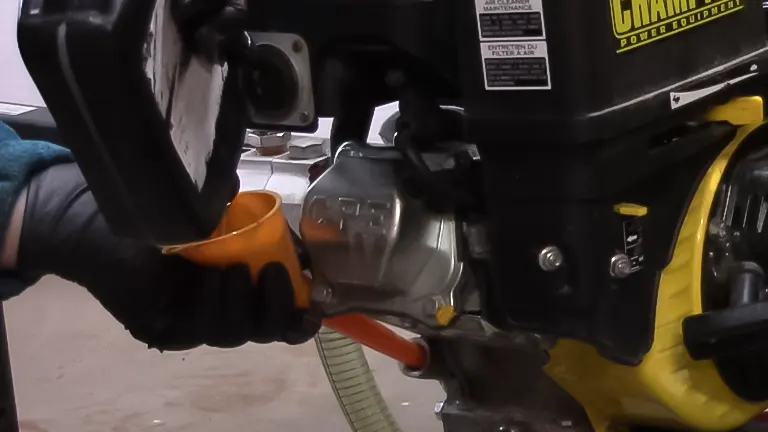
This step ensures that all the old oil is removed from the engine, paving the way for fresh oil to lubricate the engine’s internal components effectively, thereby enhancing its operational efficiency and extending its service life.
2. Air Filter Check
The air filter in a log splitter plays a crucial role in protecting the engine from dust, dirt, and other airborne particles that can cause damage or reduce efficiency. Over time, a foam rubber air filter can become clogged with debris, restricting airflow to the engine and impairing its performance.
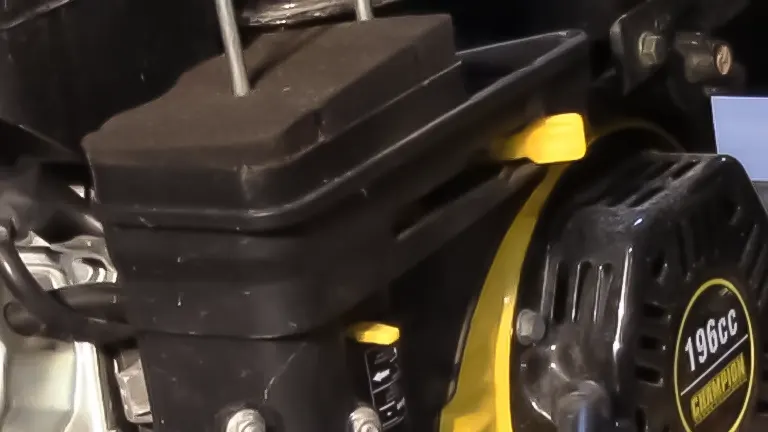
A thorough inspection of the air filter should be conducted regularly, looking for signs of excessive dirt accumulation or damage. If the filter is dirty but not damaged, cleaning it may suffice to restore proper airflow. However, if the filter is damaged or extremely soiled, replacement is the best course of action.

It’s important to note that not all air filters are oil-impregnated; if yours is, ensure it’s properly oiled after cleaning or confirm that the replacement filter meets the manufacturer’s specifications. Maintaining a clean air filter is essential for ensuring optimal air intake, which contributes to efficient combustion and overall engine health.
3. Spark Plug Maintenance
The spark plug is a vital component of your log splitter’s engine, providing the spark that ignites the fuel-air mixture to start and run the engine. Regular inspection of the spark plug can reveal a lot about the condition of your engine. Signs of wear, such as electrode erosion or carbon deposits, can indicate the need for replacement.
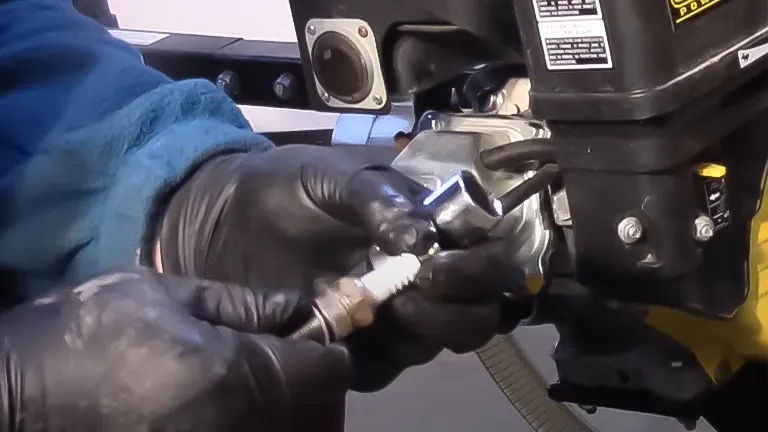
When installing a new spark plug, it’s crucial to adjust the gap between the electrodes according to the manufacturer’s specifications, as an incorrect gap can lead to engine misfires, reduced power, or even failure to start.
A properly gapped and functioning spark plug ensures efficient fuel combustion, which is key to maintaining engine performance and fuel efficiency. Spark plug maintenance, including inspection, cleaning, gapping, or replacement, is a relatively simple yet impactful way to keep your log splitter running smoothly.
4. Fuel System Care
The integrity and performance of your log splitter’s engine are directly influenced by the quality of the fuel it uses. Fuel that remains in the tank for an extended period, especially beyond a year, can degrade and lose its combustibility, leading to difficulties in starting the engine or reduced engine performance.
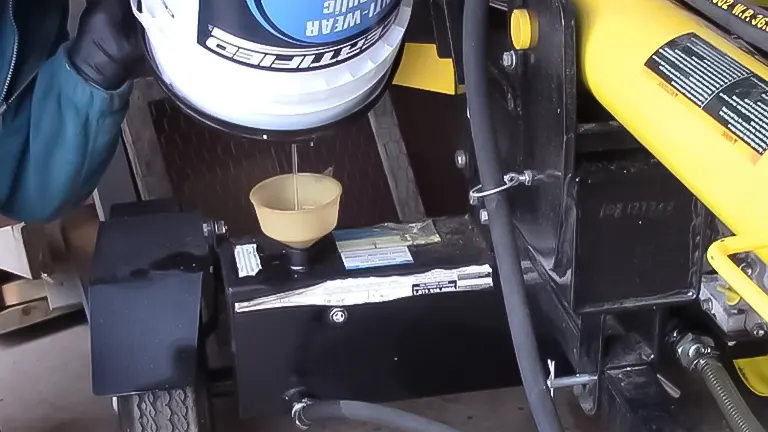
To mitigate this issue, adding a fuel stabilizer, such as STA-BIL, to the fuel can significantly prolong its lifespan, preventing it from becoming stale. This practice is highly advisable for ensuring that the log splitter is ready for operation without the need for draining old fuel, making it a straightforward yet effective step in maintaining your machine’s readiness and reliability.
5. Hydraulic System Check
The hydraulic system is the powerhouse behind the log splitter’s ability to split wood efficiently. It relies on the integrity of its components and the quality of the hydraulic fluid to function effectively.
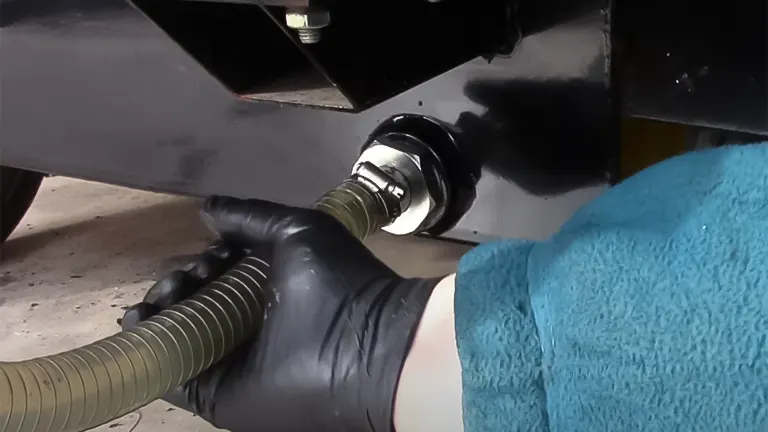
Regular inspections should be conducted to identify any signs of leaks or loose fittings within the hydraulic system, as these can lead to diminished performance and potential damage. Tightening loose fittings or replacing worn-out parts such as gear clamps can address leaks and prevent the loss of hydraulic fluid.
Additionally, it’s crucial to monitor the level of hydraulic oil and refill it as needed, ensuring to use the appropriate type of oil, like AW 32, recommended for your specific model. Proper maintenance of the hydraulic system ensures the log splitter operates smoothly and efficiently, minimizing the risk of operational failures and extending the lifespan of the machine.
Final Checks and Tips
- Inspect and Tighten all Visible Nuts and Bolts: to ensure the log splitter is physically secure.
- Test the Log Splitter: after completing maintenance to ensure everything is running smoothly.
- Plan for Future Maintenance by stocking up on essential fluids and parts, like hydraulic oil, to avoid downtime.
Maintaining your log splitter doesn’t have to be a daunting task. With these straightforward steps, you can ensure your machine is ready to tackle wood splitting efficiently and safely. Remember, regular maintenance not only extends the life of your log splitter but also enhances its performance, making your wood-splitting chores a breeze.
Related Articles:
- Log Splitter Oil Change and Hydraulic Fluid Change
- Two Essential Log Splitter Modifications Every Owner Should Consider
- Best 3-Point Hitch Log Splitters
- Best Manual Log Splitters 2024
- Best Log Splitter for the Money 2024
- Wood Splitting Made Easy: The Tire Trick
Final Thoughts
Maintaining your log splitter through regular checks and routine care is essential to ensure its longevity and operational efficiency. From starting up the engine after idle periods and conducting thorough oil changes, to inspecting air filters and maintaining spark plugs, each step plays a critical role in keeping the machine in top condition. Paying close attention to the fuel system by using stabilizers for long-standing fuel, and ensuring the hydraulic system is leak-free and well-lubricated, are equally crucial practices.
These maintenance activities not only prevent the premature wear and tear of your log splitter but also guarantee its readiness and reliability for when you need it most. By adhering to these guidelines, you can enjoy a well-functioning log splitter that serves you efficiently across many wood-splitting seasons, making your investment worthwhile and minimizing the need for costly repairs or replacements.
Frequently Asked Questions
- How often should I change the oil in my log splitter?
It’s recommended to change the oil at least once per year or every 100 hours of operation, whichever comes first. Consult your log splitter’s manual for manufacturer-specific recommendations. - Can I use any type of hydraulic fluid for my log splitter?
You should use the type of hydraulic fluid recommended by your log splitter’s manufacturer. Common types include AW 32, but the specific requirements can vary based on the machine’s design and operational needs. - How do I know if my log splitter’s air filter needs replacing?
Inspect the air filter for dirt, debris, and signs of wear. If it’s excessively dirty or damaged, it’s time for a replacement. A clean air filter is crucial for optimal engine performance. - Why is it important to use a fuel stabilizer in my log splitter?
A fuel stabilizer prevents gasoline from deteriorating over time, which is essential for equipment that may not be used regularly. It ensures easier starts and prevents fuel system damage. - How can I check for hydraulic system leaks?
Visually inspect all hydraulic lines, fittings, and connections for signs of leakage. Look for wet spots or drips and tighten or replace components as necessary. - What signs indicate that my spark plug needs replacing?
Symptoms like difficulty starting the engine, poor performance, or an uneven idle suggest the spark plug may be worn or fouled. Inspecting the spark plug for deposits or damage can confirm this. - How do I properly store my log splitter for the winter?
After the final use of the season, change the oil, clean the air filter, add fuel stabilizer, and remove or disconnect the spark plug. Store in a dry, covered location to protect from the elements. - What is the right way to tilt my log splitter for maintenance?
Use a hydraulic jack or built-in mechanism, if available, to safely tilt your log splitter, ensuring stable support to prevent accidents during maintenance tasks like oil changes. - How often should I check the hydraulic fluid level?
Check the hydraulic fluid level before each use to ensure it’s at the recommended level. Top off as needed with the correct type of hydraulic fluid. - Can I run my log splitter if the fuel has been sitting in it for over a year?
It’s not recommended due to the risk of fuel degradation, which can harm engine performance. Drain old fuel and refill with fresh gas mixed with a fuel stabilizer for best results.
We’d love to hear from you! Share your personal experiences and thoughts about maintaining your log splitter in the comments section below. Your insights and tips could help fellow users ensure their machines are in top condition, enhancing efficiency and prolonging lifespan. Whether it’s a specific maintenance routine, a troubleshooting tip, or a question you have, your contributions are valuable to our community. Let’s help each other make informed maintenance decisions and keep our log splitters running smoothly!

Edward Smith
Forestry AuthorWoodworking is about more than crafting; it's a harmonious connection with nature, mastering tools, and preserving our environment. I'm here to share my knowledge and experiences with you, forging a future where we can embrace wood's beauty and utility while safeguarding our forests' health and diversity.





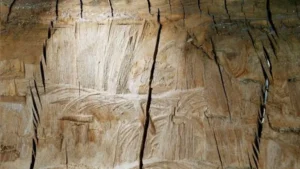







Leave your comment